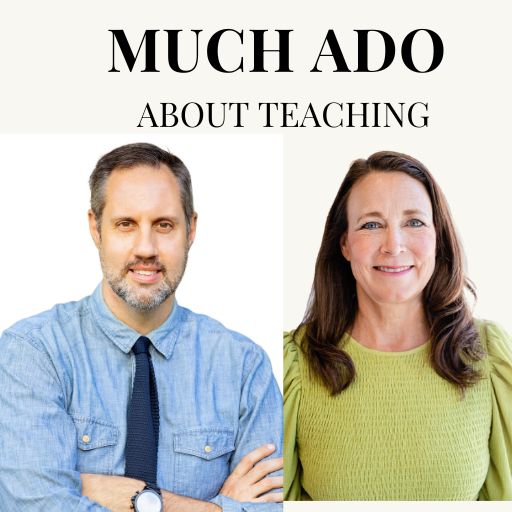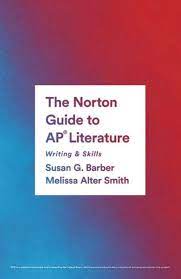If you could somehow transcribe the first poetry unit that I taught this year, the word that would appear most often would be “complex.”
In each of my classes we define complexity as something that has things connected in complicated ways. We apply that definition to poetry, looking for the parts that connect to the whole. We discuss the things that connect in a poem and how that can happen in complicated ways. We seek nuance and layers that add dimension to a poem.
For some of my students this is a struggle because they approach a poem with the same mindset that Billy Collins portrays in his poem, “Introduction to Poetry.”
But all they want to do
is tie the poem to a chair with rope
and torture a confession out of it.
As we progress through the year, I often worry that I say the word complex so often that it loses its potency and becomes background noise. I also worry that my students may be chafing at the idea of complexity. Between masking policies, virtual learning, multiple learning platforms, and daily temperature checks, a new-world order of complexity has been imposed upon their lives without their consent. Why would they get excited about exploring complexity. If anything, simplicity should be more appealing.
As I began the New Year, and with it our second unit of poetry, I needed to find a new way to help my students understand complexity. I find the solution by teaching them its opposite — simplicity.
“New Year’s Day”
The first day back from winter break we explored Kim Addonizio’s poem, “New Year’s Day”.
In it the speaker deals with love, her adolescence, the present, the distance that is created by time, geography, and emotion, loneliness, and jealousy, all while searching for a way to make a resolution on New Year’s Day. The poem illuminates these ideas through imagery, figurative language, structure, tone and diction. It ends with the speaker lifting her face up to the rain, symbolically cleansing herself of the past, ready to begin anew.
After working our way through the poem with annotations and discussions, my students wrote a precis about it for homework. Even though a precis is highly structured and adheres to a rigid format, it helps students see the things that are connected in complicated ways. It gives them the means to identify the parts of the poem that add to its complexity. Here is the format:
The precis
Sentence #1
Name of author, genre, and title of work (date published), a rhetorically active verb, and a THAT clause containing the theme of the text.
Sentence #2
An explanation of how the poet develops the theme of the poem through specific choices, such as diction, figurative language, selection of details, or other poetic devices. This sentence should include direct quotes. Consider linking long lists of observations together with semicolons [ ; ]
Sentence #3
A description of the overall structure of the poem and how it impacts or supports the text’s overall meaning/theme.
Sentence #4
A description of the attitude of the speaker and how it changes throughout the poem.
Here is what one of my students wrote:
“New Year’s Day”, a poem by Kim Addonizio, contemplates the relationship between the past and the present as the speaker traverses through a field, weeping for their past and eventually resigning to their future. In “New Year’s Day” the author establishes parallels through the various mentions of distance and time in order to highlight the disconnect the speaker feels from who they once were and how they exist now; Addonizio is able to do this through the juxtaposition of mentions of the narrator’s past (“the few loves I’ve been allowed to keep are still sleeping on the West Coast,” “they are like girls I remember from junior high”) with the mourning of their current state (“Here in Virginia I walk across the fields with only a few young cow for company,” “I don’t know why I’m walking out here,” “Those girls are nearly forty now. Like me…” ); through this contrast, Addonizio is able to portray the speaker’s desperation to feel human connection again, “cry[ing] hard for whoever used to make them happiest” and transition to their eventual sufferance and realization that they, “don’t care where those girls are now.” and that they, “want to resolve nothing”. The structure of the poem, which is disjointed and choppy, shows the hesitation in the narrator’s shift from an old life into their new one. Although the poem initially begins with a sorrowful tone, the speaker’s projection of their desolation in order to not feel alone in their solitude eventually climaxes to the speaker coming to terms with their circumstances.
Two Days Later
I was hamming it up two days later when we read Clint Smith’s “When Maze and Frankie Beverly Come on in My House.” Music was already playing when they arrived to class. When I began reading, I closed my eyes, raised my imaginary spatula, and “orchestrated the gumbo in existence.” In stanza two, I put a little shimmy into my shoulders. By the third stanza I was offering extra credit for anyone willing to come to the front of the room and do “the sprinkler.” By the end, my voice becomes sentimental as the speaker’s parents’ feet become “music of their own” long after the song has stopped.
After reading the poem twice, we talk about the devices and techniques of the poem for a bit. It doesn’t last long, tough. The power of Smith’s poem does not come from its complex use of devices and techniques. It comes from personal identification with the poem. As a class we talked about the music that echoed throughout our childhood on cleaning days and cooking nights. We then create a class playlist in which students shared the song that captured for them what “When Maze and Frankie Beverly Come on in My House” does for the speaker. The best part was, I turned the SmartBoard off when the students were adding their songs to the playlist. The period ended with me playing a sample of each song, and the students trying to guess which one of their classmates added it.
It was the most enjoyable lesson of the year.
Here is the playlist from my 6th-period class:
- Come on Eileen – Dexys Midnight Run
- Ain’t No Mountain High Enough – Marvin Gaye & Tammi Terrell
- Don’t Go Breaking My Heart – Elton John and Kiki Dee
- Beyond the Sea – Bobby Darin
- Rich Girl – Hall & Oates
- Touch Me – The Doors
- Yellow Submarine – The Beatles
- We Didn’t Start the Fire – Billy Joel
- Walk – Pantera
- Piano Man – Billy Joel
- Here Comes the Hotstepper – Ini Kamoze
- Wildest Dreams – Taylor Swift
- Play it Again – Luke Bryant
Why We didn’t Write a Precis
Between the emotion of the poem, the extra credit moment, and the joy of guessing who added which song, we didn’t have to go lie by line and annotate the heck out of it. Smith’s poem dances its way to a predictable ending. It is sparse in its use of figurative devices. Nor does the speaker work to express nuance or layer meaning. Its beauty is how simply it captures a beautiful moment.
The next day I spoke to my class about the poem and why I chose not to have them write a precis. They would have had a hard time finding things that weren’t there. For example, it would have been a challenge to describe how the speaker’s attitude changes throughout the poem because it doesn’t. The techniques and choice are somewhat obvious and don’t lend themselves to a level of analysis as other poems we have studied. It is a poem that offers itself up pretty easily.
This does not make “When Maze and Frankie Beverly Come on in My House” a lesser poem. It is just different. Whereas “New Year’s Day” is complex. Smith’s poem is simple. But these two lessons combined helped my students see complexity a little bit better. I also think it helped them appreciate poetry in a new way. Not all poems need be complex. Not all simple poems are bad.
Having served on the AP Literature and Composition Test Development Committee for six years, I am proud to say that we are always looking for complex poems. That is because we want to provide students with multiple entry points into a poem and the opportunity to write at length about more than one thing.
Yet, I realized after teaching the soundtrack lesson that focusing on complexity too much may wear out its welcome. As teachers, we need to strike a balance between complex and simple, allowing students to see the beauty in each.












